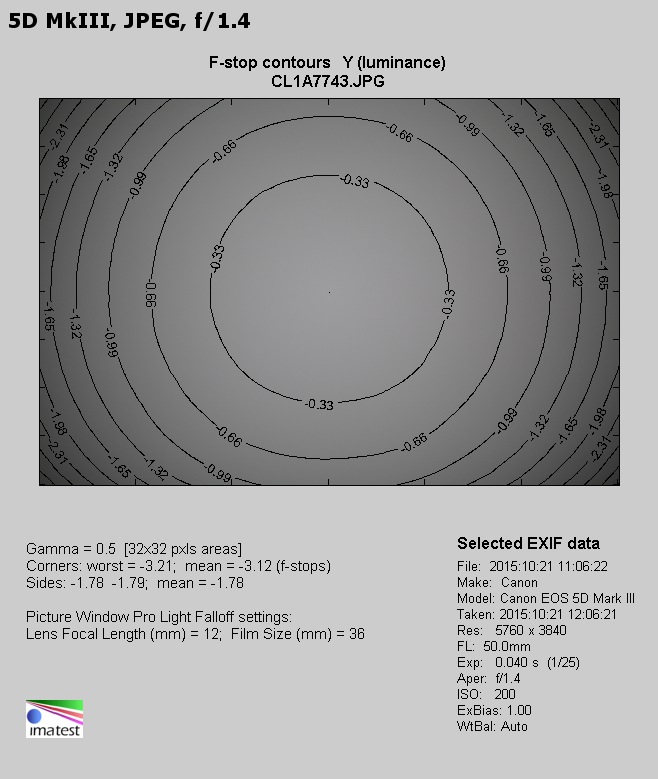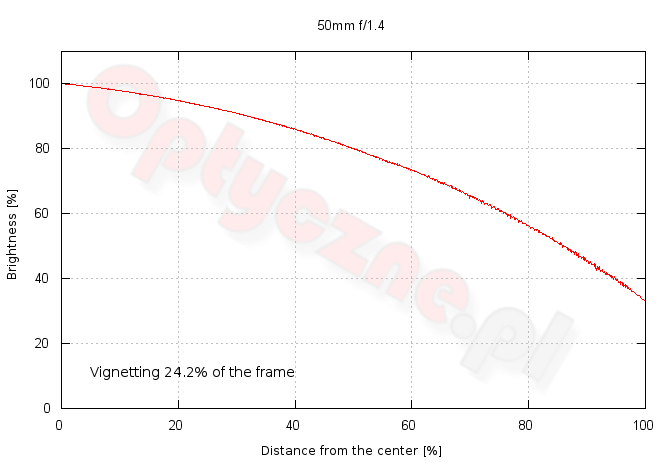Carl Zeiss Milvus 50 mm f/1.4
8. Vignetting
| Canon 50D, f/1.4 | Canon 50D, f/2.0 |

|

|
Only at the maximum relative aperture you can notice some problems but even there they remain moderate because the brightness loss in the corners amounts to 27% (−0.91 EV). By f/2.0 the vignetting cannot be spotted almost at all because it decreases to 8% (−0.25 EV).
Please Support UsIf you enjoy our reviews and articles, and you want us to continue our work please, support our website by donating through PayPal. The funds are going to be used for paying our editorial team, renting servers, and equipping our testing studio; only that way we will be able to continue providing you interesting content for free. |
- - - - - - - - - - - - - - - - - - - - - - - - - - - - - - - - - - - - - - - - - - - - - - - -
Now let’s check how the situation changes when you progress to full frame.
| Canon 5D III, f/1.4 | Canon 5D III, f/2.0 |

|

|
| Canon 5D III, f/2.8 | Canon 5D III, f/4.0 |

|

|
At the maximum relative aperture the vignetting is simply huge, amounting to 66% (−3.12 EV). Such a result fits much better older 1.4/50 constructions with small physical dimensions than a contemporary lens. We expected the Milvus to fare worse than the Otus 1.4/55 which is bigger and features a bigger focal length as well, but we didn’t think it might also be defeated by the Sigma A 1.4/50 whose parameters are, after all, comparable.
By f/2.0 the vignetting still remains high, reaching 40% (−1.49 EV); a slight level of that aberration you see only by f/2.8 where we got a result of 19% (−0.63 EV). The complete disappearance of that aberration can be obtained only by f/4.0 where it amounts to 9% (−0.28 EV).
 |
Below you can find a function graph of an averaged light fall-off presented in concentric circles, depending on the distance from the frame centre. The percentage value in every of the pictures states the size of an area limited at the top and on the right by the 100% value and at the bottom by that curve. It indicates how much light is overall lost due to the vignetting. Please, do not mix those percentages with the ones you saw at the beginning of this chapter; these two values are not connected in any direct way.







